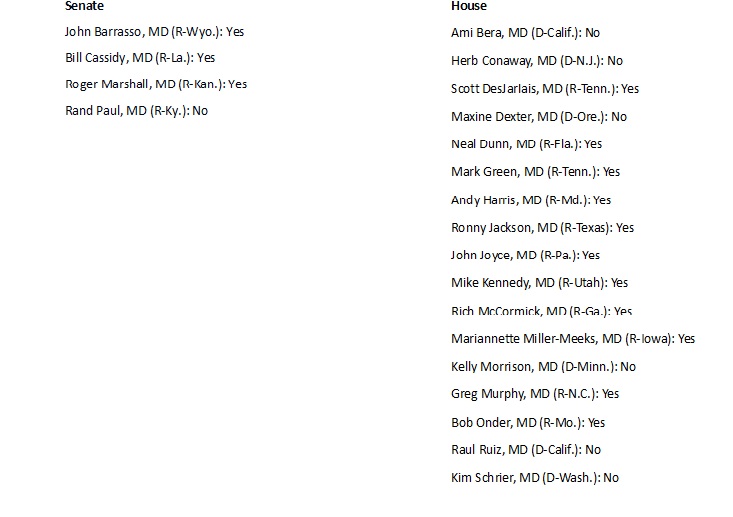
How did physicians align to Tr__p’s “Big Beastly Bill”? As you can see it was along political lines except for one Republican physician. One might think, all physicians would agree, the cutting of funding to pay for Medicaid and the expansion will cause issues. This is not only for medical personnel taking care of patients. Also, many urban hospitals serving areas not overwhelmed by the middle and upper classes will suffer. Then there is the issue of rural hospitals having less funding to stay open today to treat rural citizens.
On July 4, President Trump signed H.R. 1, the budget reconciliation bill, into law. Among other healthcare effects, the measure, also known as the “Big Beautiful Bill,” cuts $1.2 trillion from the budget over 10 years — mostly from the Medicaid and food stamp programs — and is expected to result in the loss of health insurance for about 12 million people. Some of the Medicaid cuts come from instituting a work requirement for the program.
As with any other bill, the reconciliation legislation had to be approved by both the House and the Senate; for this type of bill, only a majority vote is required, rather than a two-thirds vote as is required for most other bills.
The Senate passed the bill by a vote of 51-50, with Vice President Vance casting the tie-breaking vote. In the House, the bill passed by a vote of 218-214.
Below is how each physician member of Congress voted on the bill. The vote was mostly along party lines, with Sen. Rand Paul, MD (R-Ky.) the lone Republican physician to vote against it. Paul, a well-known deficit hawk, said he opposed the bill because it would greatly increase the deficit. Democrats who opposed the measure expressed concerns over the healthcare cuts and the increase in the number of uninsured people.
“How Did Physicians in Congress Vote on the ‘Big Beautiful Bill’? MedPage Today
Hospital and Pharmacy’s Profit Stream that Was Supposed to Help Patients, Angry Bear








